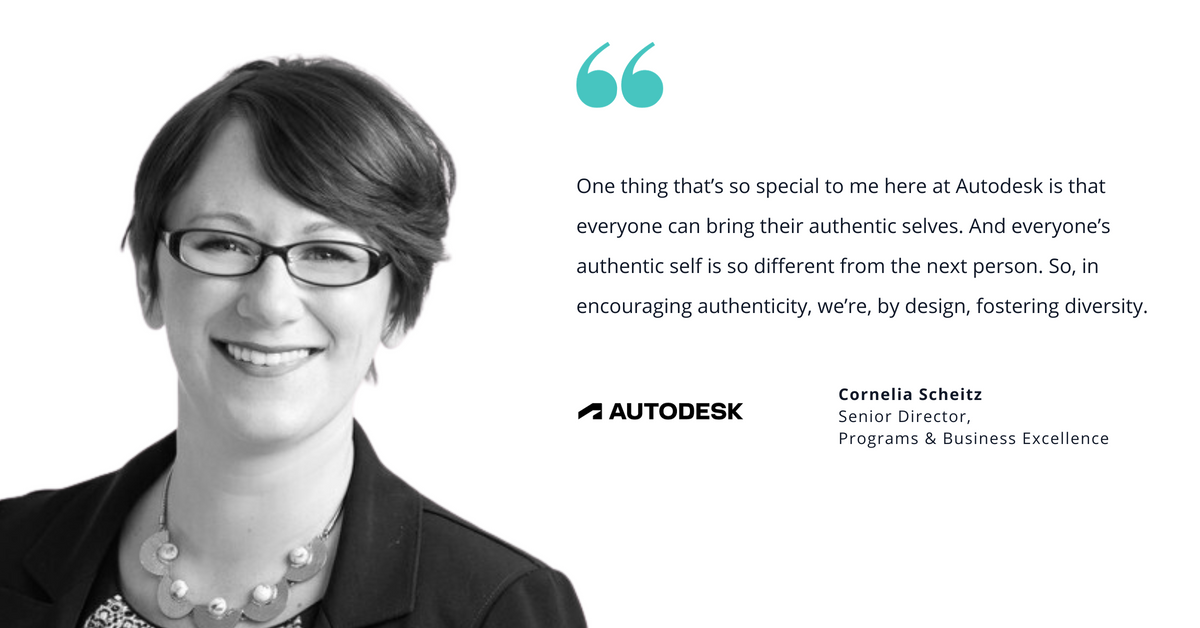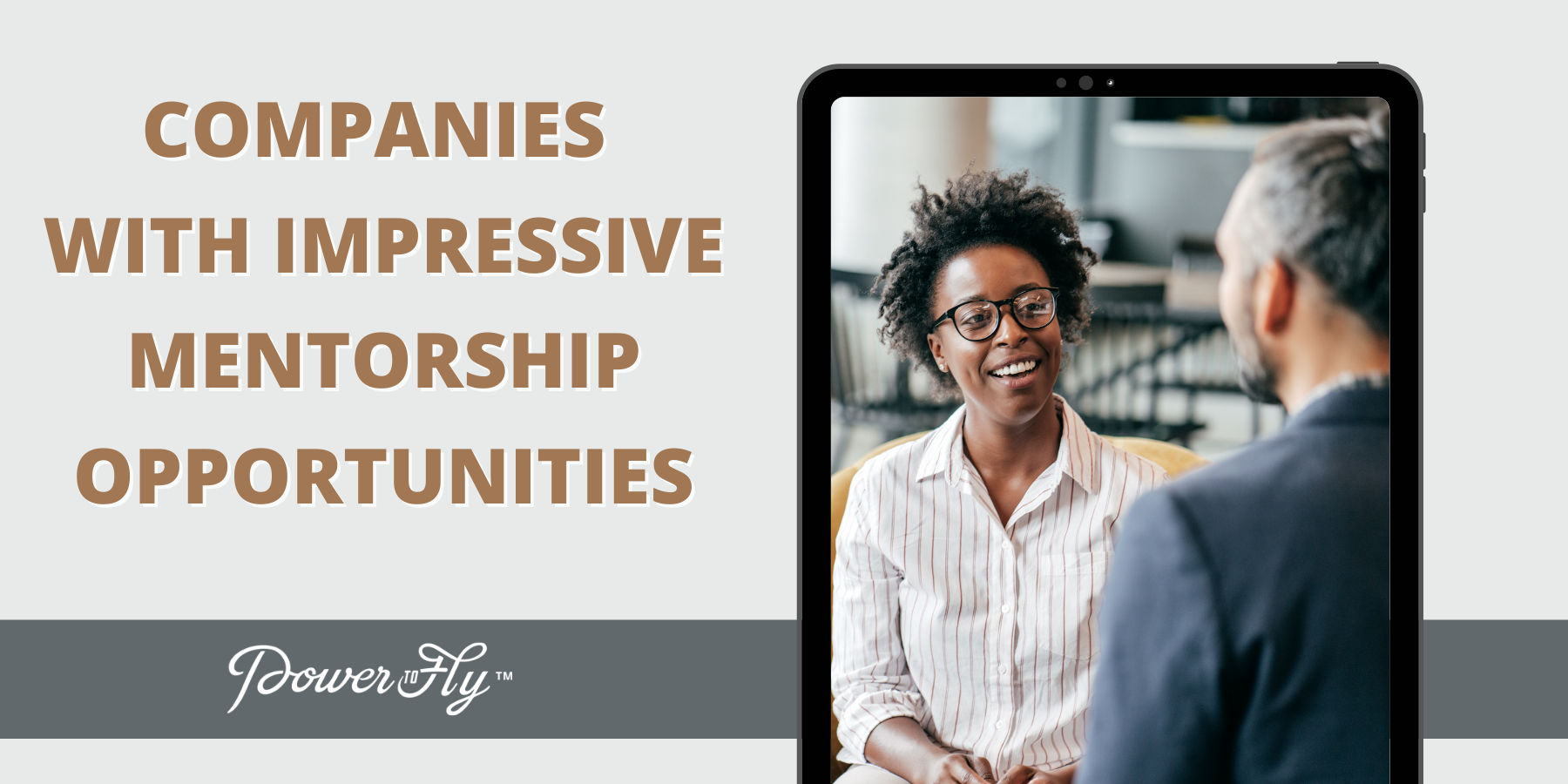Diversity is a familiar concept for Dr. Cornelia Scheitz — as are its benefits. After pivoting from academia to professional life sciences and technology, across multiple countries, she’s accrued a melting pot of experiences that inform her work today as a Senior Director of Programs and Business Excellence at Autodesk, a multinational software corporation.
The pivots and jumps might seem like a stretch, but not to Cornelia. She’s witnessed firsthand how diversity can catalyze innovation and progress. Her teams ideate skillfully, solve problems effectively, and reach solutions faster.
In short, they perform better — and grow both personally and professionally along the way.
“When we pull together all of our experiences and perspectives, we get a new picture,” Cornelia tells us. “And we’re not the sum of our parts. Instead, we’re able to multiply how our superpowers come together. The result is exponentially more powerful than a homogeneous team.”
We sat down with Cornelia to hear more about how she’s seen diversity lead to stronger teams, including the most essential ingredient for unlocking diversity’s power.
From Nobel dreams to technology innovation
At one point, Cornelia dreamt of achieving a Nobel Prize in genetics. “Looking back, I now know that was not going to happen,” she laughs, “but I definitely had this idea that I would stay in academia and continue to do research.”
Cornelia’s passion for genetics eventually led her from academic research to laboratory automation at a startup company. She found that years of meticulously transferring "clear liquids from one vessel to another" during her genetics research fueled her determination to optimize and enhance various processes in the lab.
Once in the startup environment, Cornelia enjoyed the fast-paced nature but felt stagnant in developing her management skills and learning how to operate at scale.
“I found Autodesk’s Life Sciences group and joined them to help unify their product ideas into one single item,” Cornelia explains. “It was still my area of expertise, but I was learning something new. And it was with the backing and infrastructure of a large company. So I got to wear fewer hats and focus more.”
Eventually, Autodesk closed its Life Sciences group, but Cornelia decided to stay on board in a different department.
“I went into different core Autodesk functions, utilizing my cross-functional experience and my relationship-management experience that I had built throughout my career,” Cornelia says. “I started to realize that the challenges I experienced in life sciences were the same types of challenges I saw in manufacturing as well as architecture, engineering, and construction. Seeing that allowed me to bring empathy and even share a different approach with my colleagues and, at times, with our customers.”
Diversity as a superpower
From Autodesk Technology Centers, Cornelia pivoted into Programs and Business Excellence, where she helps teams work effectively across the intersection of products and industries.
Her unique background is just one of many.
“My team has close to 50% female representation, which is pretty fantastic in a tech environment. Plus, we have folks from around the world, from Germany to Ireland to Korea to first-generation Japanese to just name a few. That brings a lot of different cultural perspectives. We have folks who traded the university experience for building and scaling startups firsthand. And then we have folks like me who have a PhD.”
Cornelia calls it a “rich fabric,” and she credits her team’s strong results to these varying backgrounds.
“We’re very high-energy. When somebody is low and discouraged by a certain problem, they can run it by someone else who’s fueling their superpower and has the right idea for how to bring us forward. And that means we’re never stuck.”
Since each team member witnesses this strength in numbers, they’re more inclined to bring ideas to the table and problem-solve.
“It means we come up with creative and new solutions. It’s a new avenue and a new path that’s rooted in some experiential evidence showing how it can work in a different context,” explains Cornelia. “And it also means we can move faster because ideation goes much faster.”
The key ingredient: belief
For Cornelia, simply building a diverse team does not guarantee stronger performance. While it sets the right foundation, the team must embrace each individual’s diverse perspectives.
“For example, everyone is very smart individually on the team, but they only have, say, five solutions for any given problem. If you multiply that with another five solutions from another team member, now you’re at 25. However, if the team isn’t bought into the concept of diversity, then you’re just going to get five plus five.”
Cornelia says people must experience the benefits firsthand to buy into the concept. Thankfully, Autodesk provides a variety of programs and opportunities to help team members experience these benefits for themselves.
“Autodesk has a very active network of nine employee resource groups [ERGs]. They host programming and events globally to support diverse communities, foster a sense of belonging, and empower allyship. On my leadership team, there’s one ERG lead, another ERG founder, and many who are active in diversity, equity, and inclusion (DEI) efforts,” shares Cornelia.
She adds how Autodesk’s mentorship program helps to foster a growth mindset and break down global barriers. Furthermore, team members can uplevel their competencies around DEI through access to professional development resources like LinkedIn Learning.
“One thing that’s so special to me here at Autodesk is that everyone can bring their authentic selves. And everyone’s authentic self is so different from the next person. So in encouraging authenticity, we’re, by design, fostering diversity,” says Cornelia.
“For me, it boils down to: Can everyone bring their true selves to the job? And when they do that, it lifts up everybody on the team because you can see the energy. You can see the radiance and dedication that people bring when they can truly be themselves. There’s psychological safety, allowing teams to collaborate and communicate openly. And that’s what makes diversity so powerful.”
Want to bring your unique background to Autodesk? They’re hiring! Explore career opportunities with Autodesk here.



